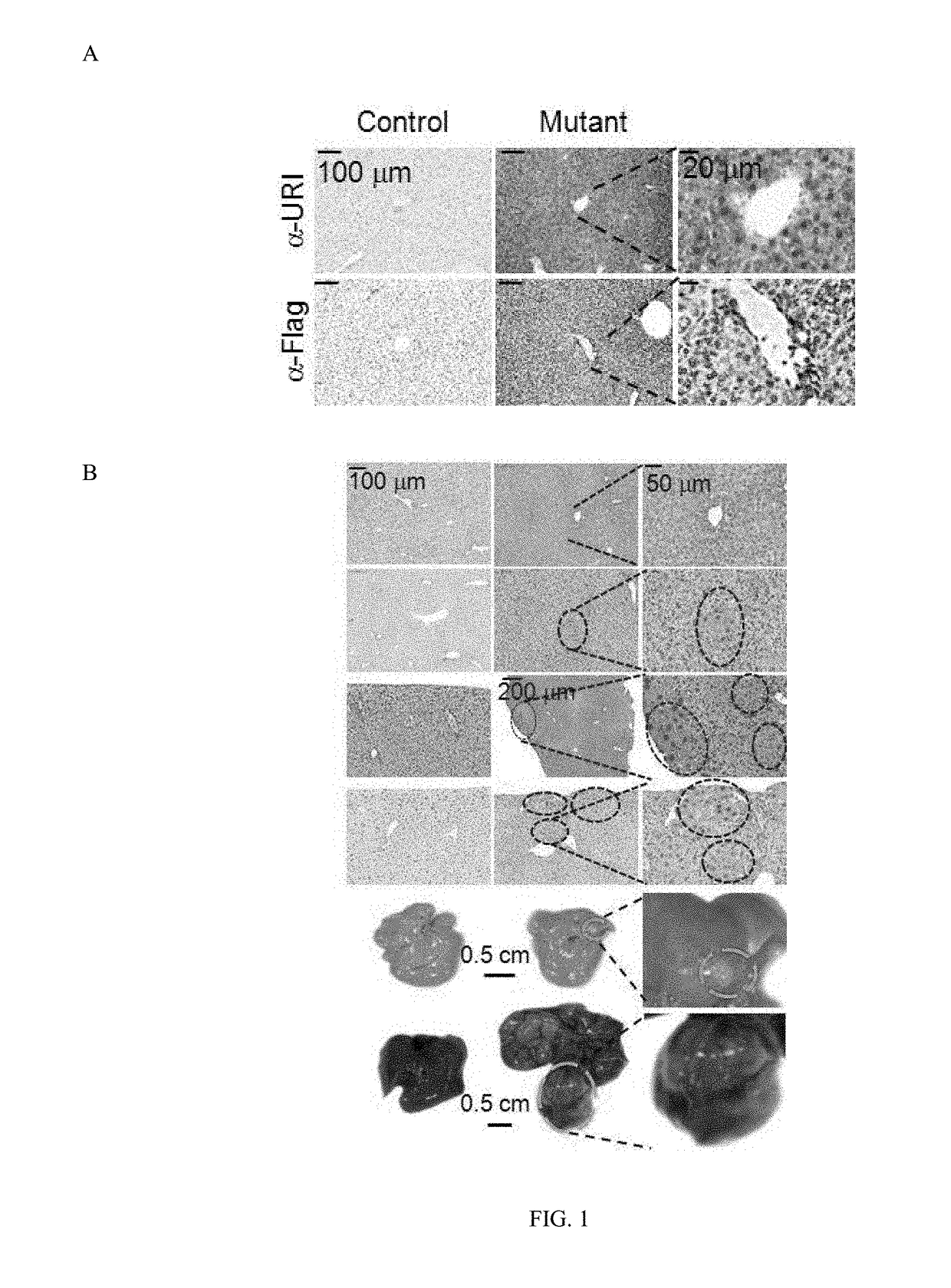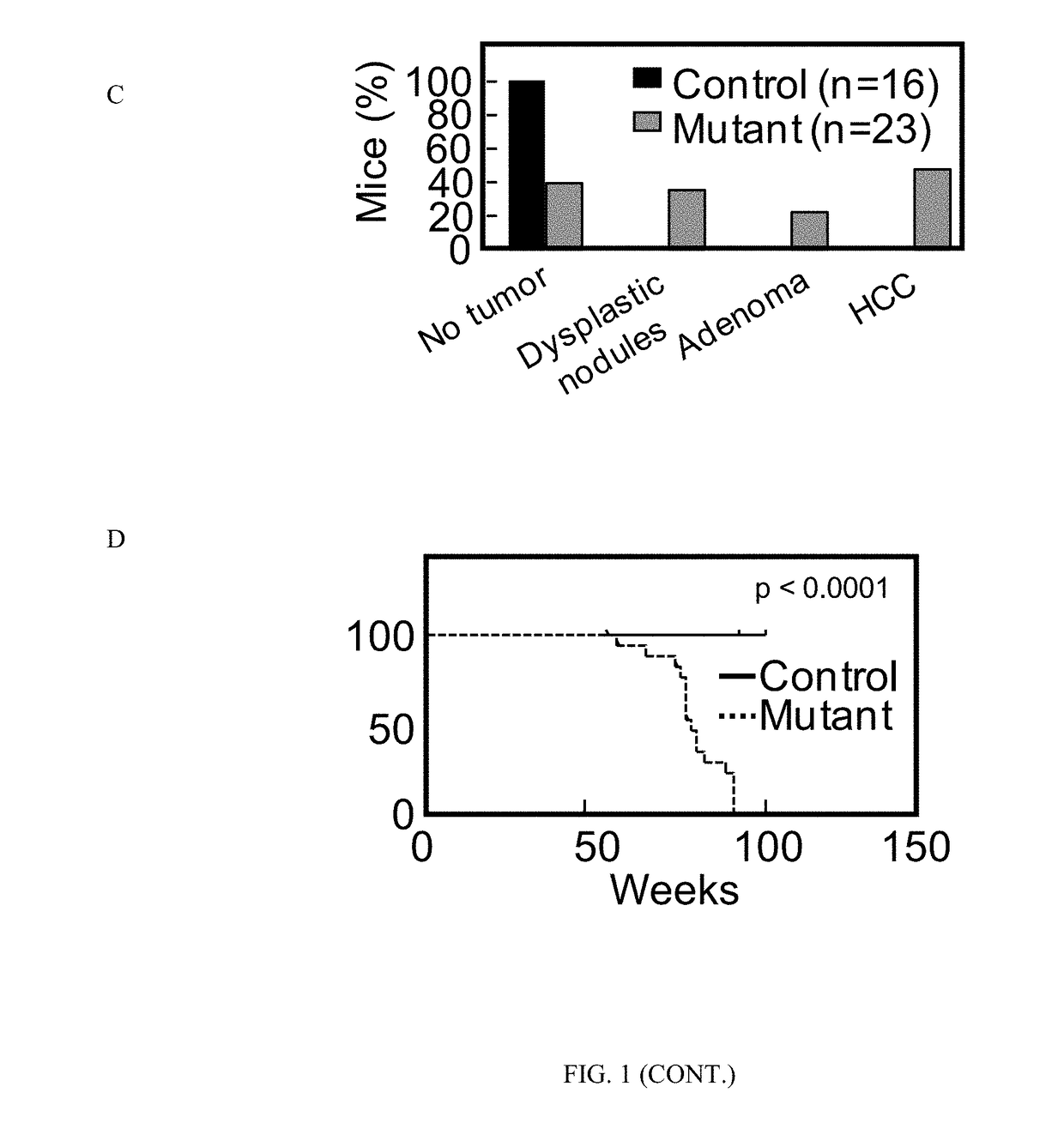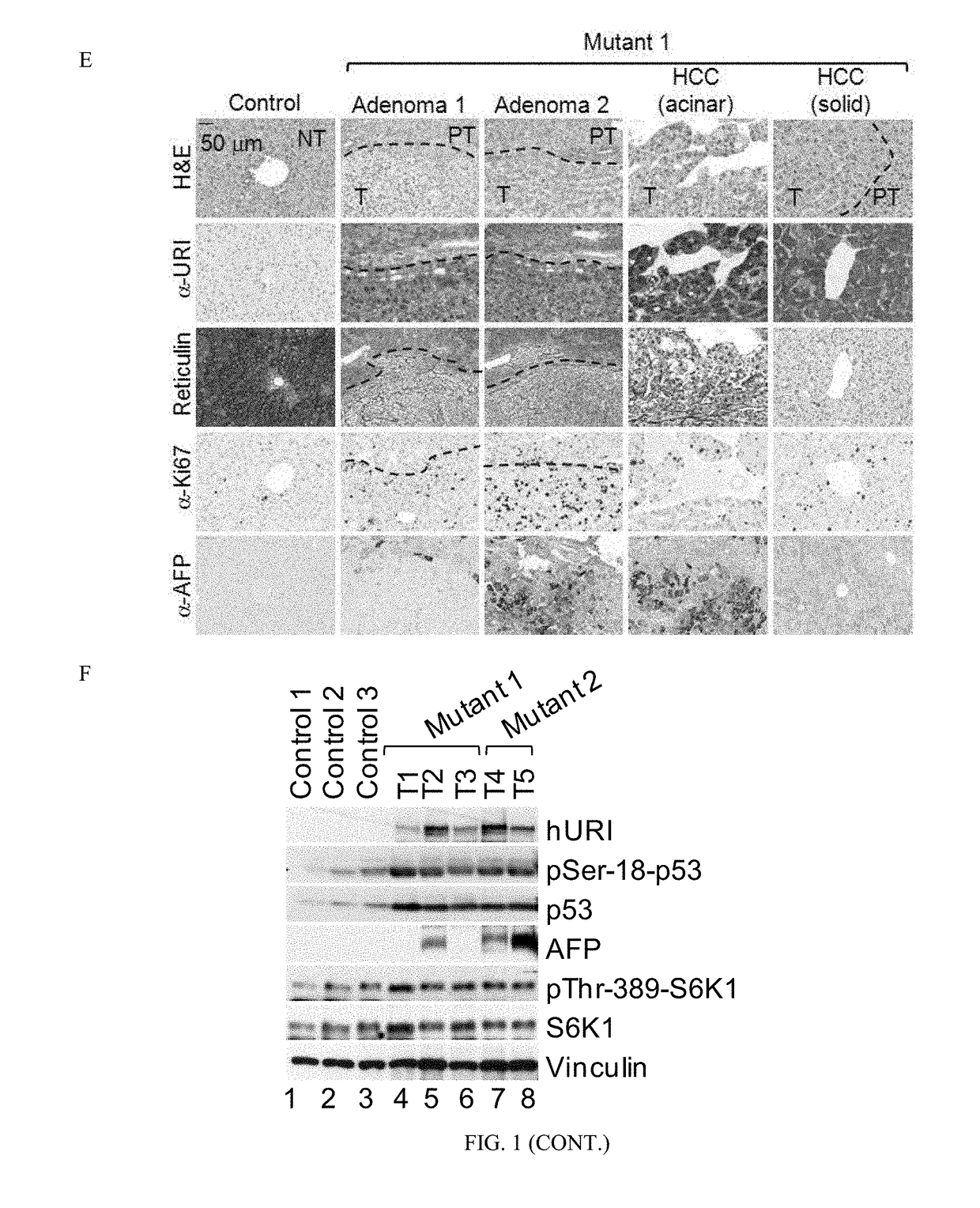Methods for Treating Cancer
- Summary
- Abstract
- Description
- Claims
- Application Information
AI Technical Summary
Benefits of technology
Problems solved by technology
Method used
Image
Examples
example 1
ssion in Hepatocytes Induces Spontaneous Liver Tumors and Recapitulates Human HCC
[0220]To elucidate primary events in HCC development, the inventors generated a Col1a1 knock-in mouse, expressing hURI via a tetracycline-dependent transactivator, controlled by the hepatocyte-specific liver activated protein (LAP) promoter. These mice (designated hURI-tetOFFhep) and littermates lacking hURI expression are referred to hereafter as “mutants” and “controls”, respectively. Without doxycycline, hURI was expressed specifically in hepatocytes from one allele from E10.5, roughly twice as strongly as mouse URI (FIG. 1A), corresponding to the fold-increase of URI expression in human HCC (see below).
[0221]The inventors observed no pathological signs in 3-week-old mutants. In 8-week-old mutants they detected no tumors visually, but H&E staining revealed anisokaryotic clusters (FIG. 1B) resembling low-grade dysplastic nodules observed in human hepatitis. At 12 weeks the clusters developed into high...
example 2
cogenic and Essential for Hepatocarcinogenesis
[0224]Ceasing hURI expression in 8-week-old mutants displaying dysplastic lesions for 24 weeks did not affect liver-to-body weight ratios, but reduced signs of fibrosis (Sirius Red staining and ca-SMA abundance) and abolished signs of dysplastic foci and tumors (FIGS. 2A-2D). S6K1 activity was increased in 24-week-old mice, but remained constant when hURI expression ceased, indicating that mTOR / S6K1 activation was hURI-independent (FIG. 2B). Similarly, when hURI was expressed for 24 weeks, during which macroscopic high-grade dysplastic nodules and adenomas were apparent, then switched off for 28 weeks residual anisokaryotic clusters were still detected, but no adenomas or HCCs. Thus, maintenance of preneoplastic lesions and tumor development requires continuous hURI expression.
[0225]Next, the inventors induced liver damage (which can initiate HCC) in URI loss-of-function GEMMs. To delete URI specifically in hepatocytes, they crossed URI ...
example 3
ed DNA Damage Precedes Precancerous Lesion Formation
[0226]Phosphorylation of histone H2AX (γH2AX), a DNA damage marker, and chromosomal instability are the most convincing clinical prognostic feature of human hepatocarcinogenesis. γH2AX and p53 phosphorylation and abundance, did not differ between 1-week-old mutant and control livers. At 3 weeks, a non-pathological stage with no dysplastic lesions, both γH2AX-positive nuclei abundance and phosphorylation of the 32 kDa subunit of replication protein A at Ser-4 and Ser-8 were substantially higher in mutants, indicating replicative stress and DDR manifested by increases in p53 abundance and phosphorylation (FIGS. 3A-3C). Thus, hURI expression induces replication stress-dependent DDR before precancerous lesion formation, then p53-dependent apoptosis occurs in cells that unsuccessfully repair DNA (detected by cleaved caspase 3; FIG. 3C). At this stage the hepatocyte proliferation rate was reduced in mutants, suggesting that DNA damage is...
PUM
| Property | Measurement | Unit |
|---|---|---|
| Level | aaaaa | aaaaa |
| Chemotherapeutic properties | aaaaa | aaaaa |
Abstract
Description
Claims
Application Information
 Login to View More
Login to View More - R&D
- Intellectual Property
- Life Sciences
- Materials
- Tech Scout
- Unparalleled Data Quality
- Higher Quality Content
- 60% Fewer Hallucinations
Browse by: Latest US Patents, China's latest patents, Technical Efficacy Thesaurus, Application Domain, Technology Topic, Popular Technical Reports.
© 2025 PatSnap. All rights reserved.Legal|Privacy policy|Modern Slavery Act Transparency Statement|Sitemap|About US| Contact US: help@patsnap.com



